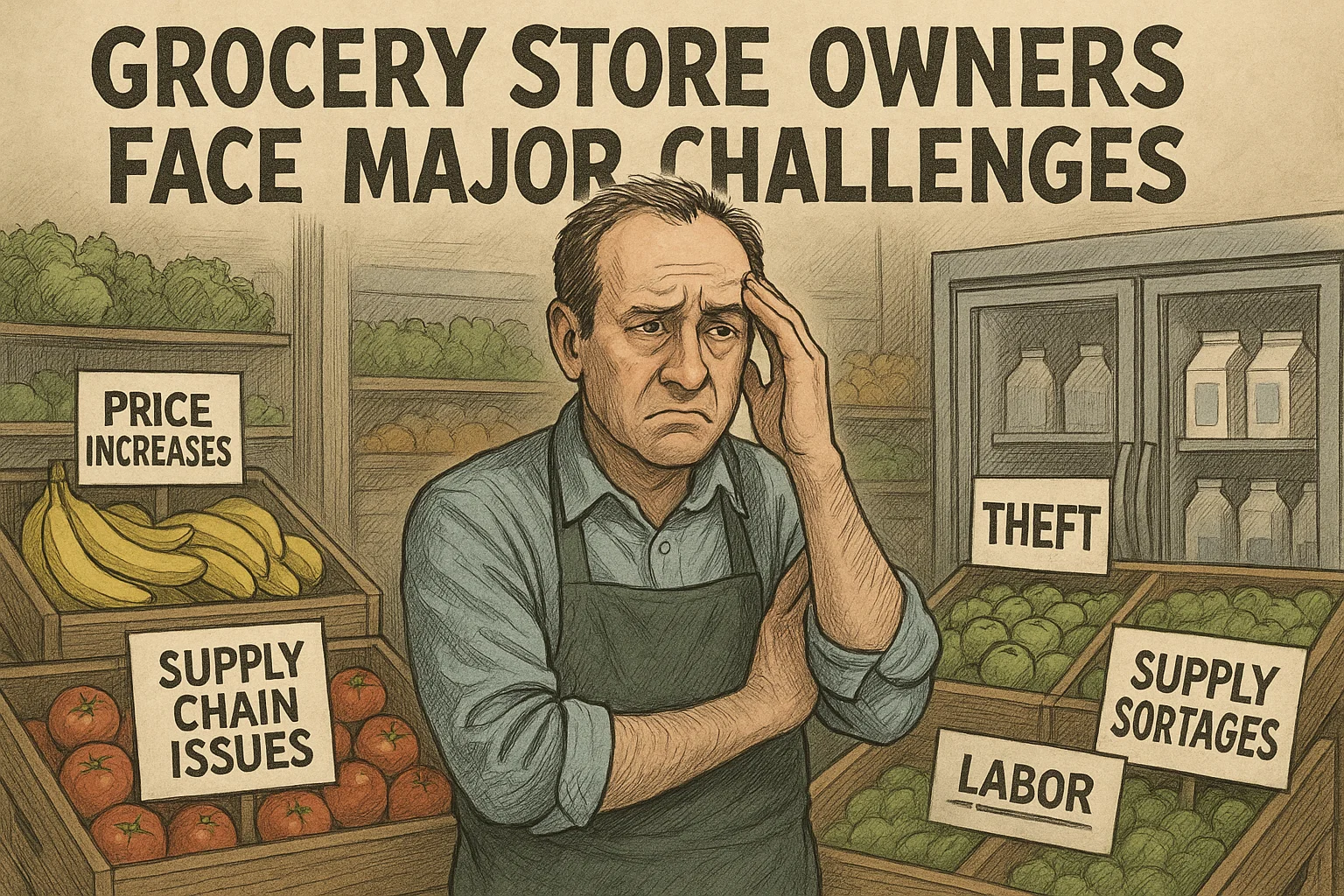Indian retail is experiencing a remarkable expansion, and franchises for grocery stores are now available outside of metropolitan areas. The Tier 1 cities are saturated with modern supermarkets and organized retail chains, but Tier 2 and 3 cities provide promising opportunities for entrepreneurs who want to start a grocery franchise.
These smaller cities have their own unique set of challenges, which require strategic planning. Knowing how to deal with these challenges and overcome them is the key difference between having a successful grocery franchise and a failing business.
This guide can help you understand the challenges of operating a grocery store in India’s growing cities, whether you are considering your first investment or expanding into smaller markets.
Understand the Grocery Franchise Landscape
India’s retail grocery market has a value of over 600 billion dollars, and there is significant potential for growth in cities with Tier 2 or Tier 3 status. The markets in question represent about 70% of India’s population, but are underserved. The gap in the market creates a lot of opportunities for franchise grocery stores that are willing to adapt their business to local conditions.
Smaller cities, unlike metropolitan areas, where the consumer’s behavior can be predicted, require that franchisees understand cultural differences, income levels, and long-established shopping habits.
Grocery Store Owners Face Major Challenges
Inventory Management and Supply Chain Management
Establishing reliable supply chains is one of the most difficult challenges for grocery stores in smaller towns. Unlike Tier 1, which has a well-developed network of logistics, Tier 2 and Tier 3 cities face the following challenges:
Transport delays are a result of poor road infrastructure and limited freight service. These delays can harm the quality of fresh produce, perishable goods, and waste.
Due to limited supplier networks, franchise owners struggle with maintaining consistent stock levels. Most national suppliers concentrate on the major cities and leave smaller markets unserved.
The storage challenges are caused by inadequate warehouse and cold storage infrastructure. This makes it hard to extend the shelf life and maintain quality.
Customer Behavior and Market Preferences
It is important to understand local preferences for the success of a grocery franchise. Customers in Tier 2 and 3, as well as urban customers, often have different buying patterns.
Customers expect frequent promotions and competitive prices. Often, building customer loyalty depends on providing better value than local traditional retailers.
The product preferences are highly dependent on the regional cuisine, culture, and tastes. Successful grocery stores must carry products that meet these needs.
The frequency of shopping is higher, but the basket size tends to be smaller as consumers prefer buying fresh products and have less storage space.
Local Retailers Compete with Each Other
Existing local markets and grocery stores pose a significant challenge to new franchises in the grocery business. The competitors are often:
Over the years, has built strong community relations that are difficult to question.
Pricing strategies that are flexible and can be quickly adapted to changing market conditions or competitor action.
Ability to understand local tastes and source from suppliers in the region.
Operating Challenges
Operating a franchise grocery store in a smaller city requires that you address several operational challenges.
Training and Retention of Staff is a challenge when there are few retail employees, and they may move to bigger cities in search of better jobs.
The adoption of technology may take longer, since both customers and staff might require time to adjust to digital payment methods and modern retail systems.
Maintaining product quality is more challenging when the supply chain becomes longer and less reliable.
How to overcome these challenges with proven strategies
Local Partnerships That Work
The most successful grocery franchisees in Tier 2 cities and Tier 3 cities are those who focus on building strong local partnerships.
Connect with local suppliers that understand the market and provide cost-effective, reliable sourcing solutions. This partnership often results in improved pricing and more reliable supply.
Work with farmers to directly source local produce. This reduces cost, assures freshness, and attracts customers who appreciate locally sourced products.
Work with local logistics providers that have networks in place and are familiar with regional challenges.
Adapting Local Customer Needs
It is important to understand and respond to local preferences for the success of a grocery franchise:
Perform thorough market research in order to better understand the local food habits, brands preferred, and prices. The research must be done continuously, as tastes can change.
Tailor product mixes to regional tastes while maintaining franchise standards. Include regional and local brands along with national products.
Use flexible pricing strategies to remain competitive and profitable. Think about loyalty programs or bulk discounts to attract price-conscious customers.
Also Read: Six Things To Know Before You Buy A Supermarket Franchise
The Technology-Driven Efficiency
The use of modern technology is a great way to overcome operational challenges.
Use inventory management software to track and predict stock levels. Automate the reordering process. It reduces wastage and makes sure that popular products are available.
Point-of-sale systems provide sales analytics that help you to understand your customers’ preferences and optimise product placement.
Discover delivery options by partnering with local delivery services or developing your last-mile delivery network.
Engaging Communities and Marketing
The success of a grocery franchise depends on the strength of its community connections.
Participate in local events to raise brand awareness and show community commitment.
Promote local causes to create positive brand associations.
Encourage word-of-mouth marketing through exceptional customer service.
Employee Development and Training
The long-term benefits of investing in your team include:
Offer comprehensive training in customer service, product information, and modern retailing practices.
To reduce employee turnover, offer a competitive salary as well as growth opportunities.
Encourage staff loyalty by creating a work environment.
Sustainable Future
To be successful in cities of Tiers 2 and 3, you need patience, flexibility, and a commitment to understanding the local market. The most successful grocery store franchisees are those who spend time building relationships with customers, understanding their needs, and adapting to local conditions.
Balance between franchise standards and local flexibility is the key. Successful franchisees find ways to maintain brand consistency, operational excellence, and make their shops feel natural in their community.
Begin with a comprehensive market study, foster strong relationships with suppliers, and cultivate a culture of service excellence that prioritizes customer needs. A grocery franchise can be profitable and successful in Tier 2 or 3 cities with the right strategy and perseverance.
Success doesn’t come overnight. Build a strong foundation and learn from your local experience. You can then adapt and adjust your strategy based on feedback from customers and market changes.



